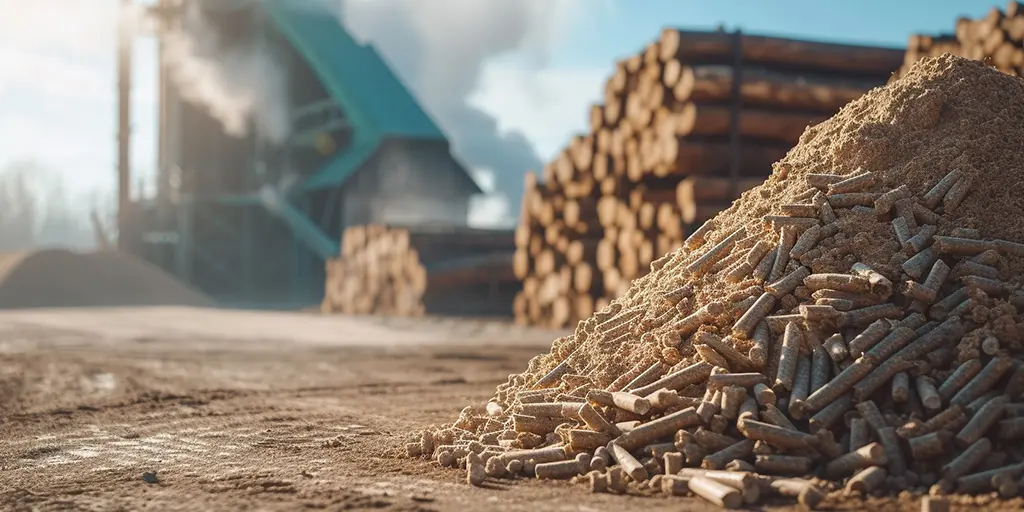California needs Biomass Energy to Meet its Wildfire goals. Its Policies Keep Burning them Down

California is a case study in how grand visions and slogans can smother practical problem-solving. The Los Angeles Times recently ran an article with the headline: “California needs biomass energy to meet its wildfire goals. Its projects keep going South.” It was meant as reporting, but it reads like an indictment of California’s governing philosophy. It shows, once again, how a state that trumpets itself as the global leader in “climate action” cannot get out of its own way, even when it desperately needs solutions.
At the heart of the problem is California’s wildfire crisis. After more than a century of fire suppression, the forests — especially in the Sierra Nevada — have grown so dense that they are tinderboxes waiting for a spark. Cal Fire Deputy Chief John McCarthy put it plainly:
“The more than a century of fire suppression in California’s forests — especially in the Sierra Nevada — had dramatically increased their density, providing fires with ample fuel to explode into raging beasts”.
The state knows it must thin at least one million acres of forest per year. That work produces 10 million tons of wood waste annually. The question is: what to do with the mountain of biomass?
Here lies the opportunity — and the failure. Biomass can be a fuel. It can generate energy, and it can, at least in theory, help pay for the costly forest thinning. McCarthy himself admitted the numbers:
“Treating a single acre of land could cost $2,000 to $3,000. At a million acres a year, that’s $2 billion to $3 billion annually. Grants — maybe $200 million … 10% of the whole thing. So, we need markets. We need some sort of way to pay for this stuff and in a nontraditional way”.
Biomass could be one of those markets.
California used to understand this. In the 1980s, it had more than 60 biomass plants, supplying nearly 9% of residential power. That was back when the state encouraged a diverse energy mix. But in 1994, the California Public Utilities Commission shifted priorities: no longer would it support a balanced portfolio, but simply the cheapest possible electricity. Biomass plants, being more expensive, could not compete. They were bought out and shut down. Today, only 23 remain, and the number is expected to keep falling.
This history sets the stage for the story of Arbor Energy, a California startup founded by Brad Hartwig. Arbor designed a high-tech system that can turn forest waste into synthetic gas, run turbines, and capture the resulting CO₂ for underground storage. Officials praised it as a triple victory: wildfire mitigation, clean energy, and carbon sequestration all in one.
The carbon sequestration feature deserves a pause. From a purely engineering standpoint, capturing and burying carbon dioxide is an unnecessary inefficiency. The CO₂ is not poison; plants will recycle it. But in today’s climate policy theater, no project can survive without offering a carbon-neutral or, preferably, carbon-negative pitch. Companies like Arbor tack on sequestration not because it makes sense scientifically or economically, but because it makes climate activists and regulators happy. Without it, permits and funding would evaporate. California has created a world where efficiency and practicality are subordinated to appeasing a political narrative.
Despite the promise, Arbor’s California plans collapsed. After initial state financial support, the company ran into the wall that has stopped countless other ventures: permitting delays, local opposition, budget cuts, and activist lawsuits. The LA Times summarized it bluntly:
“After Arbor initially won state financial backing for a pilot project in Placer County, the El Segundo-based company’s California ambitions fell through, like many biomass projects before it. Instead, it’s heading to Louisiana”.
Louisiana — a state not exactly known for worshipping at the altar of Net Zero — is now the beneficiary of California’s homegrown innovation. Arbor secured a $41 million deal with Frontier Climate, backed by Google, Meta, and Stripe, and will build its first commercial facility near Lake Charles. Hartwig explained why:
“We can’t rely on California for the money to develop the technology and deploy the initial systems. For a lot of reasons, it makes sense to go test the machine, improve the technology in the market elsewhere before we actually get to do deployments in California, which is a much more difficult permitting and regulatory environment”.
This pattern keeps repeating. In 2022, Chevron, Microsoft, and Schlumberger tried to revive a biomass plant near Fresno with carbon capture attached. It was killed after the EPA asked them to withdraw the permit, following opposition from environmental groups and locals. In 2023, Golden State Natural Resources proposed processing over a million tons of biomass into wood pellets for export. That too collapsed, with critics claiming it would harm forests and worsen air quality. The message is clear: California wants biomass in theory, but refuses it in practice.
Meanwhile, the American South has embraced the industry. Woody biomass accounts for 2.3% of the South’s energy, compared to just 1.2% on the West Coast. The South produces the vast majority of America’s biomass pellets, exporting over 10 million tons in 2024, up from virtually zero in 2000. It is no coincidence. The South has fewer regulatory hurdles and fewer veto points for activist groups. Companies like Drax may face fines for pollution, but the industry exists, jobs exist, and the markets function. In California, nothing gets built.
Here is the irony: California spends billions battling wildfires, evacuating communities, and rebuilding infrastructure after flames tear through overgrown forests. Yet it refuses to use a technology that could help fund forest thinning because activists distrust it. The Center for Biological Diversity and others advocate a “hands-off” approach to forests, preferring “home hardening and evacuation planning alone”. In other words: do nothing about the forests, let them burn, and hope people can get out in time. That is not policy; it is surrender disguised as environmentalism.
The deeper problem is governance by ideology. California’s leaders set bold goals — “thinning one million acres per year,” “achieving Net Zero by 2045,” “100% clean energy” — but they empower every possible veto player, from local residents to national activist organizations, to block the means of achieving those goals. When reality intrudes, as it inevitably does, projects collapse. The costs pile up, the fires spread, and the technology leaves for friendlier ground.
Carbon sequestration is emblematic of the dysfunction. Companies are forced to add it as a feature, not because it makes the underlying technology work better, but because it is a form of indulgence payment to the climate priesthood. Capture carbon, bury it underground, and receive permission to operate. The science of whether this matters for the climate is dubious at best, but it keeps the activists smiling. Meanwhile, the real problem — dangerous levels of combustible material in California’s forests — remains unresolved.
The LA Times unintentionally highlights the absurdity of this arrangement. California officials openly admit they cannot afford to thin the forests without private-sector biomass markets. Startups like Arbor design systems that, at least in theory, provide a way to turn waste into money. But the same state refuses to streamline the permitting, ignores its own funding commitments, and allows activist lawsuits to tie up projects. Then it wonders why investment goes elsewhere.
This is not an isolated issue. It is part of California’s larger pattern of mismanaging energy. The state shut down nuclear plants that provided reliable, carbon-free power, only to scramble years later to keep the last one — Diablo Canyon — running to avoid blackouts. It showered subsidies on solar, but failed to account for the fact that the sun sets, forcing reliance on imports and natural gas. It pushed wind farms, but cannot get the transmission lines built. Each policy is justified in isolation by lofty rhetoric, but taken together they form a system designed to fail.
The result is paradoxical. California claims global leadership in climate action but imports more electricity than any other state. It claims to be fighting climate change but allows its forests to burn, sending plumes of carbon into the sky that dwarf the savings from its electric car mandates. It claims to champion innovation but drives innovators like Arbor to Louisiana. The gap between rhetoric and reality grows wider each year.
The case of biomass is particularly telling because it exposes the cost of refusing to face trade-offs. No energy source is perfect. Biomass plants can produce ash containing heavy metals, and tar from the gasification process is an inevitable byproduct. But these are engineering challenges, not showstoppers. The real obstacle is political: California insists on a world where only perfectly clean, perfectly safe, perfectly carbon-negative technologies are acceptable. Since no such technologies exist, nothing gets built.
Meanwhile, the fires rage on. Billions are spent on evacuations, on rebuilding homes in fire-prone areas, on emergency firefighting. The LA Times story should have been titled as is this article: “California needs biomass energy to meet its wildfire goals. Its policies keep burning them down.”
The lesson is not confined to biomass. It applies to California’s broader governing philosophy: a preference for symbolic goals over practical trade-offs, for slogans over engineering, for regulation over results. Unless that changes, the state will remain what it has become: the global capital of climate rhetoric and wildfire reality.



